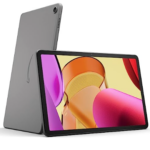The Role of Tablets in Web3-Based Social Networks
With the rise of Web3 technologies, decentralized social networks are quickly emerging as key applications of the new internet. As Web3 matures and evolves, tablets are increasingly becoming the embedded devices of choice for leveraging the advanced features of these social networks.
But what are tablets, and what role do they play in the rise of Web3?
In this article, we take a closer look at the role of Web3-enabled tablets in the world of decentralized social networks. We’ll look at the features of these tablets, the advantages they offer, and how they can help advance the evolution of social networks on the Web3 technology stack.
What Are Web3 Tablets?
Web3 tablets are tablets that are designed to leverage the features of the Web3 technology stack, providing users with more control and privacy over their data and activities.
The tablets use Web3 protocols, such as IPFS and Ethereum, to store and access data. By using an encrypted file system, users can store their data securely and access it from anywhere in the world. Additionally, the tablets are designed to be interoperable with other Web3 platforms, meaning the user can easily move data from one Web3 platform to another.
Web3 tablets also provide users with the ability to use decentralized apps (dapps) and other Web3-based services. This allows users to control their data and activities using Web3 protocols, creating an even more secure and private user experience.
Advantages of Web3 Tablets
The key advantage of Web3-enabled tablets is the increased security, privacy, and control they provide users. By using Web3 protocols, users can store their data securely and access it privately, without worrying about third-party interference. Additionally, the use of dapps and other Web3 services provides users with more control and transparency over their activities.
The Web3 protocols also enhance the user experience, allowing users to access a wide range of decentralized services. With Web3 tablets, users can take advantage of dapps and other services that are not available on traditional mobile devices.
Finally, Web3 tablets are designed to be interoperable, meaning the user can easily access their data and activities from any connected device. This offers users the flexibility to engage with decentralized social networks from wherever they happen to be.
How Web3 Tablets are Advancing Social Networks
Web3 tablets provide a secure, private, and convenient way to access and interact with decentralized social networks.
By leveraging the features of the Web3 technology stack, these tablets allow users to store their data securely and access it from anywhere in the world. This eliminates the need to trust third-party intermediaries for data storage and access, reducing the risk of data breaches and giving users more control over their data.
Additionally, the interoperability of the Web3 tablets allows users to access social networks from any connected device. This provides users with the flexibility to engage with social networks from wherever they happen to be.
Finally, Web3-enabled tablets allow users to access a wide range of decentralized services, providing users with more control and transparency over their activities.
Conclusion
Web3-enabled tablets are quickly becoming the go-to devices for decentralized social networks. The tablets provide users with increased security, privacy, and control over their data and activities. Additionally, the interoperability of the tablets allows users to access and interact with decentralized social networks from anywhere in the world.
By leveraging the features of the Web3 technology stack, Web3-enabled tablets are advancing the development of social networks on the Web3 technology stack.





























